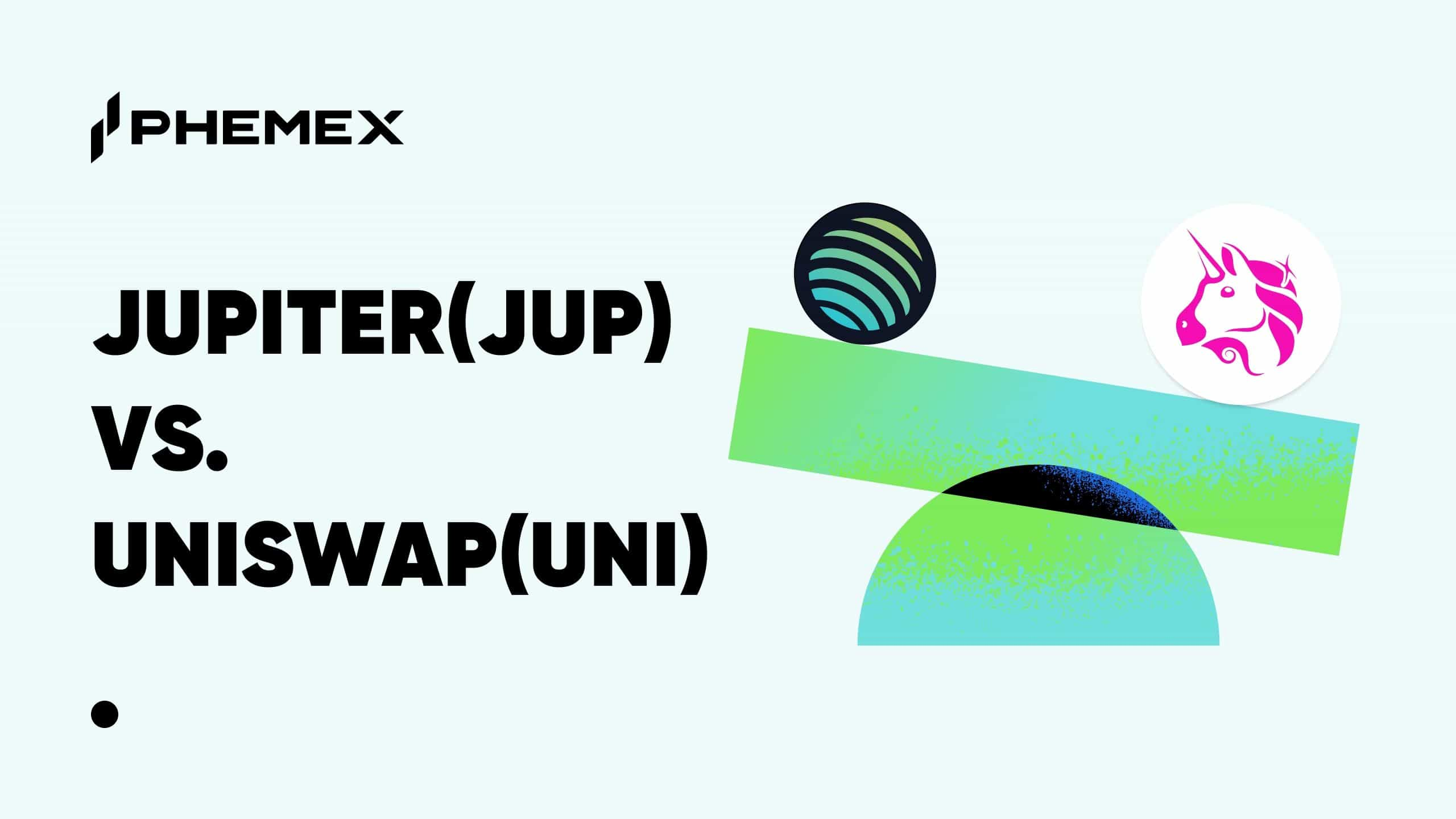The Sui Network (SUI) has captured the attention of the crypto world once again—this time under high-stakes circumstances. Following a $220 million exploit targeting Cetus Protocol, the largest decentralized exchange on Sui, investors are questioning what’s next for this high-performance Layer-1 blockchain. Despite the shockwaves sent through its DeFi ecosystem, SUI has shown notable price resilience, trading near $3.87 with a market cap of nearly $13 billion.
In this in-depth SUI price analysis, we’ll unpack the short-term impact of the Cetus hack, evaluate the current technical setup, and explore Sui’s long-term potential through 2030. Whether you're a trader watching key support levels or a long-term investor weighing growth drivers and risks, this breakdown offers a data-backed look at where SUI could go next.
Summary
-
Ticker Symbol: SUI
-
Current Price: ~$3.87 (May 22, 2025)
-
Chain: Sui Network (Layer-1 blockchain)
-
Contract Address: N/A (native layer-1 coin)
-
Market Cap: ~$12.9 billion
-
Circulating/Max Supply: ~3.34 B / 10 B SUI
-
ATH / ATL Price: $5.35 (Jan 4, 2025) / $0.3648 (Oct 19, 2023)
-
All-Time ROI: 39× (+3800% from $0.10 ICO price in 2023)
-
Availability on Phemex: Yes (SUI is listed on Phemex Spot & Futures)
What Is Sui Network?
Sui Network is an innovative Layer-1 blockchain designed to deliver high speed and scalability for Web3 applications. Launched by Mysten Labs in 2023, Sui uses the Move programming language (originating from Facebook’s Diem project) to enable a secure, object-centric data model. In simpler terms, Sui can handle a very large number of transactions in parallel, making it extremely fast and user-friendly.
The network introduces features like zkLogin (for easy logins) and sponsored transactions (letting projects cover users’ gas fees) to remove common barriers in crypto. By prioritizing a seamless user experience and robust security, Sui aims to solve the inefficiencies of older blockchains and attract mass adoption.

Source: Sui Blog
Current Price & Market Data (as of May 22, 2025)
As of May 22, 2025, SUI trades around $3.87 per coin, reflecting a modest gain of roughly +2% in the past 24 hours. Over the last week the price is flat (~+0.6% 7d), but zooming out, SUI has surged about +45% in the past 30 days amid a broader altcoin recovery. This recent rally lifted Sui’s market capitalization to approximately $12.9 billion, ranking it the 13th-largest crypto asset by market cap. Daily trading volumes are robust – about $3.6 billion in 24-hour volume – signaling high liquidity and active interest from traders. Sui’s market liquidity is bolstered by its listing on major platforms like Phemex, ensuring investors can easily trade in and out of positions.
Despite its strong rebound, SUI remains about 27% below its all-time high of ~$5.35 set in January 2025. It’s still up nearly 10× from its all-time low of ~$0.36 in October 2023, showcasing the dramatic volatility early investors have experienced. The market sentiment as of now is cautiously optimistic – Sui’s community sentiment is slightly bullish (around 56% upvotes on CoinGecko polls), and its Fear & Greed Index is neutral (51), indicating neither extreme fear nor hype.
Price History & Performance Overview
Sui Network’s price history has been a rollercoaster since its launch in 2023. Let’s break down the key chapters of SUI’s chronological price performance:
-
Launch and Early Trading (Mid-2023): SUI hit the market in May 2023 amid massive hype as a “next Solana/Aptos”. Initial trading saw a spike toward ~$4.00 within days of launch, but this euphoria was short-lived. By May 5, 2023, SUI had plunged to ~$1.26, about 70% down from that debut spike. This early crash was largely due to excessive initial supply and profit-taking as many early buyers and airdrop recipients cashed out quickly, flooding the market with tokens.
-
2024 Bull Cycle (Recovery and New Highs): In late 2023 and through 2024, Sui’s fortunes reversed dramatically. Growing developer activity and a generally bullish crypto market ignited a massive rally. SUI’s price climbed from under $0.50 in Q4 2023 to over $4 by the end of 2024. In fact, 2024 was Sui’s best year so far – the coin gained over +430% that year, closing around $4.12 on Dec 31, 2024.
-
2025 Correction and Volatility: After the January peak, SUI couldn’t escape a brutal correction. The coin experienced a challenging start to 2025, declining roughly 68% from the ATH by early April. Specifically, SUI fell to around $1.71 in April 2025, erasing a large portion of its gains. Notably, technical analysts observed a bullish RSI divergence as SUI hit $1.71 – while price made lower lows, the Relative Strength Index made higher lows, hinting the downtrend was losing steam.
-
Impact of Major Events: Throughout Sui’s short history, news events have had a noticeable impact on price. For example, exchange listings (like being listed on Phemex and others at launch) initially pumped liquidity and interest. Perhaps the most significant event to date occurred in May 2025, when Sui’s leading DEX Cetus was hacked for ~$220M. This hack (details in a later section) immediately shook confidence in Sui’s DeFi ecosystem. On May 22, 2025, news of the exploit caused SUI’s ongoing rally to stumble – the coin dipped from the $4s back to ~$3.80 as investors digested the potential fallout. While Sui’s price only slipped ~2% on the day of the hack (suggesting resilience or swift containment), the event highlights how security incidents and fundamental news can rapidly change market sentiment.
On-Chain & Technical Analysis
From a technical analysis (TA) standpoint, Sui’s chart is painting an interesting picture. The recent rally off the $1.71 low came with strong momentum signals. For instance, on the daily chart SUI formed a bullish MACD crossover in April, indicating shifting upward momentum. The Relative Strength Index (RSI) spiked above 70 during the May run-up – an overbought reading suggesting the rally was strong but due for cooling off. Indeed, as SUI neared $4.20, minor pullbacks occurred to reset the overheated RSI. Currently RSI has moderated to more neutral levels (50s-60s), giving SUI room for another push if demand returns.
Key support and resistance levels have emerged in SUI’s price action. On the support side, the April low around $1.70-$1.75 is the major floor – a break below that would signal a serious trend reversal to the downside. More immediately, former resistance levels have turned into supports after the recent rally: for example, the ~$2.40 area (which was a hurdle during the downtrend) now serves as support, as does the $2.80-$2.90 zone that SUI cleared in early May. As long as SUI stays above these zones, the bulls retain some control. On the upside, SUI faces overhead resistance around $4.25-$4.30, which was the recent rally peak and just below the January ATH.
Moving averages offer additional context: SUI has recently climbed back above its 50-day and 200-day moving averages, which is a classic bullish trend confirmation. In fact, at one point during the recovery SUI’s 50-day SMA (~$2.5) crossed above the 200-day SMA (~$3.1) from below – a bullish crossover pattern often called a “golden cross,” signaling potential trend reversal to the upside. On-chain metrics show that Sui’s network activity is growing. The number of unique SUI token holders is over 23 million addresses, indicating widespread token distribution.

Source: 3xCapital
Short-Term Price Prediction (2025–2026)
Predicting Sui’s short-term price (through 2025 and 2026) requires considering best-case, base-case, and worst-case scenarios. Here’s a three-scenario SUI price forecast for the next 1–2 years:
-
? Bullish Case (2025–26): In a bullish scenario, Sui continues gaining adoption and benefits from a broadly rising crypto market. Upcoming catalysts – such as major partnerships, new DeFi/NFT projects on Sui, or improved market sentiment – could drive SUI back toward its all-time high and beyond. If the current uptrend holds, analysts say SUI could range between $5 to $7 by the end of 2025. This implies reclaiming the $5.35 ATH and potentially setting new highs. A sustained bull case might even see SUI approach the $10 level in 2026, especially if a full-scale crypto bull market returns.
-
⚖️ Neutral Case (2025–26): In a more moderate outcome, Sui’s price growth might stall or proceed gradually. The neutral case sees SUI consolidating in a range, with periodic rallies and pullbacks balancing out. Macro factors (like uncertain global economic conditions or a range-bound Bitcoin) could keep SUI from skyrocketing. Under this scenario, SUI might end 2025 in the $4–$5 range, essentially holding current levels or modestly above.
-
? Bearish Case (2025–26): In a bearish scenario, Sui’s price could retreat significantly, driven by adverse developments. Factors like regulatory crackdowns, major technical failures, or aggressive token unlock sell-offs could put strong downward pressure on SUI. A bear case might see SUI falling back toward $1–$2 (retesting its old lows). Additionally, any security breaches or loss of user funds (like the Cetus hack) hurt confidence; multiple such incidents could scare away users and developers, reducing Sui’s network value.
Long-Term Price Forecast (2027–2030)
Looking further out to 2027–2030, price forecasting becomes increasingly speculative. However, we can outline a growth outlook for Sui based on its fundamentals and the broader crypto trajectory.
Bullish Long-Term Outlook: If Sui Network successfully executes on its vision, by 2030 it could be a top-tier smart contract platform supporting a vibrant ecosystem of applications. In this scenario, Sui’s price could be many multiples of today’s value. Some analysts have floated targets in the dozens of dollars: for instance, one optimistic projection sees SUI reaching $30+ by 2030 (i.e. roughly 8× its current ATH). For SUI to trade in the $30–$40 range, it would need to attain a market cap in the realm of $100–$130 billion (assuming near-full dilution by then) – which is feasible only if crypto as a whole expands significantly and Sui grabs a substantial share of that growth.
Base-Case Long-Term Outlook: A more measured forecast would be that Sui grows steadily but faces competition, resulting in moderate price appreciation. In this case, SUI could still hit new all-time highs by 2027–2028 – perhaps reaching the high single digits or low teens in USD price. For example, SUI might trend toward $10-$12 by 2027 (a level some experts predict in a positive but not overly euphoric scenario). By 2030, maybe SUI lands in the $15-$20 zone in this base case. This would imply Sui becomes a well-established layer-1, but not necessarily the dominant one – it shares the stage with Ethereum, Solana, Polygon, Aptos, etc. Its market cap might be in the tens of billions, making it a successful project but not a world dominator.
Bearish Long-Term Outlook: There’s also the possibility that Sui does not live up to its promise by 2030. In a bearish long-term scenario, SUI’s price could stagnate or decline as years go on. This could happen if, for example, Sui fails to attract a critical mass of developers or users, or if a competitor blockchain (or a new technology) makes Sui effectively obsolete. By 2030, the crypto landscape might be dominated by a few winners, and Sui might or might not be among them. In the worst case, SUI could trade well below its current price even years from now – many early L1 projects from past cycles (remember EOS, for instance) lost momentum and are valued at a fraction of their peaks even after 5-6 years.
Long-term, Sui Network’s price potential skews positive but remains highly speculative. It has many ingredients for success – cutting-edge tech, a growing ecosystem, and ample funding – but it operates in a fiercely competitive environment.

Source: Sui Official Website
Fundamental Drivers of Growth
Let’s examine the fundamental growth drivers that SUI bulls often cite:
-
Innovative Technology & Performance: Sui’s core strength is its technological differentiation. It introduces a unique parallelized transaction processing model (using a DAG – Directed Acyclic Graph – approach) that can handle extremely high throughput. In tests and early usage, Sui has demonstrated the ability to process tens or even hundreds of thousands of transactions per second in certain scenarios. This blows most competitors out of the water (for context, Ethereum does ~15 TPS on mainnet, Solana claims ~65k TPS in theory). Such performance makes Sui attractive for applications like gaming, social media, or decentralized finance that need speed.
-
Network Adoption & Ecosystem Growth: The value of any platform coin (like SUI) is heavily tied to network effects – the more people use the network, the more valuable the token becomes. Sui is still in its early days but is rapidly expanding its ecosystem. For example, Sui’s Total Value Locked in DeFi had surged above $1.2B by early 2025, indicating users are depositing funds into Sui-based protocols. We’ve seen NFT collections, games, and DeFi platforms launching on Sui. One notable push is in blockchain gaming: Sui’s team has even introduced a handheld gaming device (Sui Play) to attract gamers into its ecosystem. If one of these Sui-native applications becomes a breakout hit (imagine a viral game or a must-use DeFi app), it could bring millions of users onto Sui.
-
Partnerships and Integrations: Sui is actively forming partnerships that could drive adoption. Notably, Sui has been collaborating with major companies in Asia – for instance, a partnership with Alibaba Cloud was announced to help support Sui’s infrastructure in that region. Such collaborations can open the door to enterprise or institutional usage of Sui. Real-world asset (RWA) initiatives on Sui, if any, could be a future driver – imagine tokenized stocks or real estate on Sui’s fast ledger. While nothing major on RWA has been announced yet, the narrative of bringing real-world assets to blockchain is growing, and Sui could capitalize on that due to its throughput. Finally, exchange integrations (besides Phemex, which already lists SUI) such as being added to more institutional platforms or payment apps would increase accessibility and demand.
Key Risks to Consider
No investment is without risk – and Sui Network, despite its promise, has several key risks that potential investors should weigh:
-
Competition in Layer-1 Space: Sui is entering a crowded battlefield of Layer-1 smart contract platforms. It directly competes with the likes of Ethereum, Solana, Avalanche, Cardano, Polkadot, and its close cousin Aptos, among others. All these platforms are vying for developer mindshare and user adoption. Ethereum, while slower, has a massive network effect and is evolving (with Layer-2 scaling solutions). Solana boasts high speeds as well and already has a large ecosystem. Newer entrants keep emerging too. Sui will need to not only match competitors’ features but truly stand out (perhaps via Move’s security or unique user experience) to capture market share.
-
Token Dilution & Unlocks: One of the risks of investing in Sui Network is the token’s supply dynamics. Only about one-third of SUI’s total 10 billion supply is currently circulating. The rest is held by early investors, the team, foundation, or set aside for ecosystem incentives – and these tokens will unlock over time according to a schedule.
-
Declining Engagement or Development: Sui’s value is premised on continued growth of its community and developer activity. If over time the developer momentum or social buzz weakens, that’s a red flag. Watch metrics like GitHub commits, new projects launching on Sui, and active users – if these plateau or drop, it may signal that Sui’s innovation is stagnating. The crypto space moves fast; if Sui doesn’t keep up in attracting talent and users, it could fall behind. Another aspect is that Mysten Labs and the Sui Foundation currently drive a lot of development – the risk is whether the platform can become sufficiently decentralized and community-driven. If key team members were to leave or funding dries up, would the community sustain the project?
-
Security and Ecosystem Risks: The recent Cetus DEX hack of $220M is a stark reminder of the risks in Sui’s ecosystem. While the hack was due to a vulnerability in a third-party protocol (Cetus) and not Sui’s base layer, it nonetheless affected the network’s reputation and users’ funds. Smart contract exploits, DeFi hacks, or even potential vulnerabilities in Sui’s code are ongoing risks. Each successful exploit can erode user trust and deter new investors from using the platform. In the Cetus incident, even Sui’s native stablecoin integration was affected (the USDC on Sui depegged to zero temporarily). Although Sui’s validators and team acted quickly – freezing a majority of the stolen funds – not every future incident may be so contained. If Sui becomes known as an unsafe place for funds due to repeated hacks or scams in its ecosystem, that would curb its growth dramatically.
In light of these risks, investing in SUI requires caution. It’s crucial to diversify and size positions appropriately. Many of the above risks (competition, dilution, regulation, engagement, security) are not unique to Sui – they apply to many crypto projects. But Sui has its specific context where, for instance, the Cetus hack underscores DeFi risk on new chains, and the heavy initial backing means a lot of supply sits with early investors.
Cetus Protocol Hack: Impact on Sui Network
One cannot analyze Sui’s outlook in 2025 without addressing the elephant in the room – the $220 million hack of Cetus Protocol in May 2025. Cetus is (or was) the largest decentralized exchange (DEX) and liquidity provider on Sui, so this exploit sent shockwaves through the Sui community. Here’s a rundown of what happened and its implications:
-
What Happened: On May 22, 2025, hackers exploited a flaw in Cetus’s smart contracts, effectively tricking the protocol with fake tokens and draining liquidity pools. The attacker introduced spoofed tokens that had no real value, but due to a logic vulnerability, Cetus treated them as valuable and allowed swaps that siphoned out real assets. In total, an estimated $220 million worth of crypto was stolen from Cetus’s pools – making it one of the largest DeFi hacks of the year. The attack caused chaos in Sui’s DeFi ecosystem: several Sui-based tokens lost most of their value in minutes (for instance, one token LOFI crashed 76%, another HIPPO plunged 81% amid the liquidity shock). Even a stablecoin representation of USDC on Sui completely lost its peg, temporarily hitting $0 because the pools were emptied.

Source: The Defiant
-
Response and Containment: The Cetus team reacted quickly by pausing all smart contracts and trading on the platform as soon as the breach was detected. Sui’s network validators and broader community also sprang into action. Notably, Sui Foundation coordinated with major exchanges and partners to freeze the stolen funds. Thanks to these efforts, roughly $160M of the hacked assets were frozen in the aftermath. The remaining ~$60M is still missing, and investigations are ongoing. Sui’s official channels announced full support to help Cetus resolve the issue, indicating that the exploit was being treated as a network-wide concern, not just one dApp’s problem.
-
Impact on Market Sentiment: The hack undeniably dented confidence in the Sui ecosystem. As mentioned, SUI’s price, which had been rallying, pulled back on the news (dropping from ~$4.00+ to around $3.80). While a ~5% intra-day dip might not sound huge, it represented a reversal of momentum – SUI was up over 60% in the 30 days prior, and that climb “hung in the balance” after the exploit. The hack fueled a narrative that Sui’s DeFi ecosystem might be “not ready for prime time” or insecure, which bears could use to sow doubt.
The Cetus hack serves as a lesson and a test for Sui. In the short term, it may slow down DeFi growth on Sui as users become more cautious and developers double-check their contracts. It puts pressure on the Sui Foundation to enhance auditing, security tools, and maybe insurance funds to reassure participants.
In the long run, if handled well, Sui can emerge stronger – every major chain has faced hacks (Ethereum’s DAO hack, Solana’s various exploits, etc.) and often they recover by learning and improving. Sui’s credibility will depend on transparency around this incident and steps taken to prevent similar exploits. One could argue that Sui’s quick freezing of funds, while somewhat centralized, protected users and shows a pragmatic approach to security. But it also raises questions: to freeze funds, validators likely intervened – how will Sui balance emergency centralization with decentralization principles? It’s a debate for governance going forward.
Is Sui Network a Good Investment?
With all the data and analysis above, we arrive at the big question: Is SUI a good investment? Let’s break down a balanced outlook:
The Bull Case for SUI: Sui Network offers a compelling long-term use case. It’s a high-performance blockchain with strong technology and a clear purpose, aiming to be the infrastructure for scalable Web3 apps. The team behind it (Mysten Labs) is experienced (ex-Meta engineers) and well-funded, which is a positive sign for sustained development. Sui’s early growth – achieving a multi-billion market cap and attracting a community quickly – suggests it has above-average momentum. If you believe that decentralized applications requiring speed (like gaming, finance, social dApps) will thrive, then Sui is positioned to capture that trend. From this angle, SUI could be a good investment for long-term holders betting on the platform’s success in 2025–2030.
The Bear Case for SUI: On the other hand, one must acknowledge that SUI remains a highly speculative asset at this stage. Its valuation around $12-13B market cap already prices in a lot of future success – Sui needs to deliver big things to justify rising further. There are execution risks: the technology, while promising, is unproven at global scale, and there’s heavy competition. If Sui fails to capture a significant user base, the token could stagnate or fall. Also, SUI’s huge circulating supply increase coming (unlocking billions of tokens over time) could act like a headwind on price, especially if early large holders take profit. In the short to medium term, there’s also the reality of market volatility; SUI has shown it can swing wildly, so an investor could be down 50% or more from a buy point if a bad cycle hits.
It’s important to stress that investing in SUI (or any crypto) comes with significant risk and this isn’t financial advice. Prospective buyers should do their own research (DYOR), assess the fundamentals, and possibly start with a small exposure. Diversification is wise – even if you’re bullish on Sui, it shouldn’t be 100% of a portfolio. One good practice is to keep an eye on Sui’s development progress: follow their roadmap achievements, developer community growth, and any real adoption metrics. If those are trending positively, one could justify continuing to hold or accumulate SUI. If red flags appear (project delays, declining usage), it may warrant re-evaluating.










